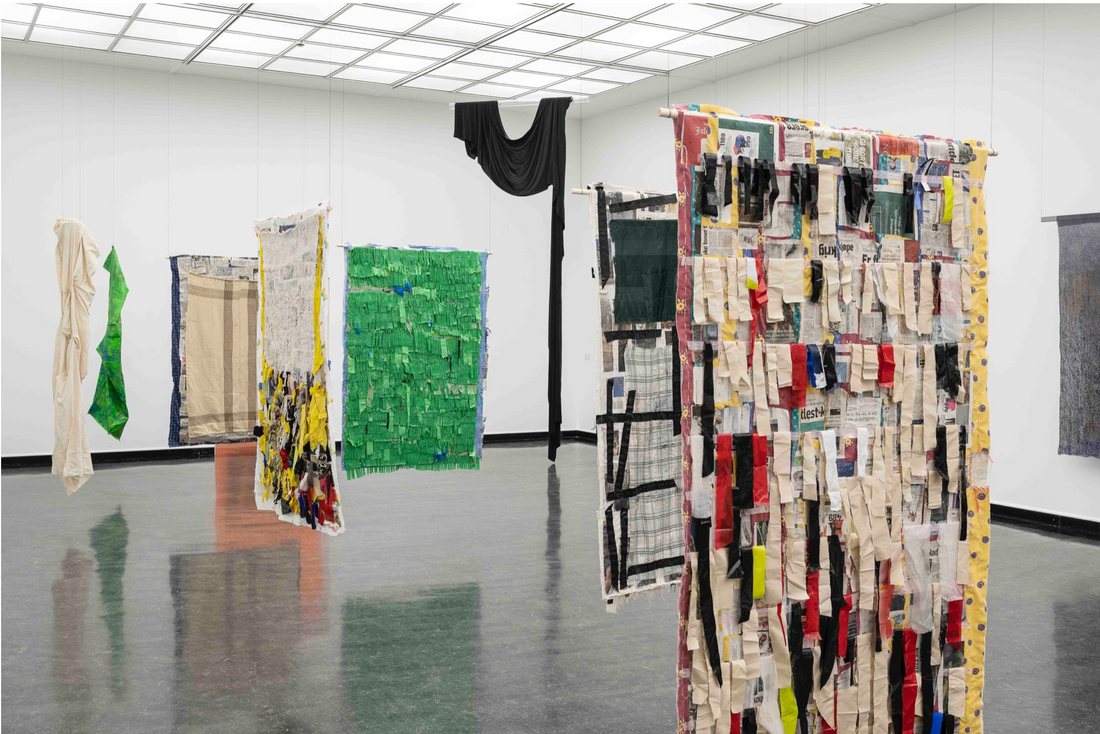
ELISABETH HAARR'S TEXTILES PACK A POLITICAL PUNCH
Text by Robbie LaFleur
Elisabeth Haarr has been a central figure in contemporary Norwegian fibre art for decades. She received wider recognition in the fall of 2021 when she was the chosen artist for Norway’s most important annual solo exhibition, the Festutspillutstillingen (Festival Exhibition) in Bergen.
Haarr attended the College of Arts and Crafts in Oslo and early on she rebelled against the focus on conventional beauty and perfect technique, arguing that textiles could be ugly or provocative, yet meaningful and expressive. She began working in tapestry but expanded her techniques to include appliqué, sewing and embroidery, often for large protest banners. 
Image: Elisabeth Haarr, Syria Blind, 2013. © Eline Mugaas. Image above: Elisabeth Haarr, Installation view at he Festival Exhibition 2021. © Thor Brødreskift.
Much of Haarr’s work has political and feminist themes. An early and well-known tapestry, Frustrasjonsteppe (Frustration, 1982), created when she had young children and little money and time to advance her career, spelled out her challenges in woven words: house, children, clean, alone, alone. With little money for materials, she incorporated twine and plastic shopping bags.
Haarr does not want to be labeled only as a political artist, but much of her work comments strongly on social issues. Her large works range from commentary on feminist struggles of the 1970s up to the refugee and environmental crises of today. Syriaforheng (Syria Blind, 2013), was inspired by disturbing photographs from the besieged streets of Aleppo, Syria. Women hung flimsy barriers of blankets, sheets, or tablecloths between houses along narrow streets to block the view of snipers. The blanket theme recurs in her series from 2020, Flyktningtepper (Refugee Blankets), double-sided collage-like hangings made from sheets, newspapers, and other textiles.
Image: Elisabeth Haarr, Frustrasjonsteppe (Frustration), 1982. © Thor Brødreskift.
Artworks in textile techniques can pack a political punch, partly because they work against expectations: a layer of surprise is added when the serious intent is revealed. This post is excerpted from “To the Point, With Textiles.” You can read about two more Norwegian artists working with political themes in fibre in the full article.
